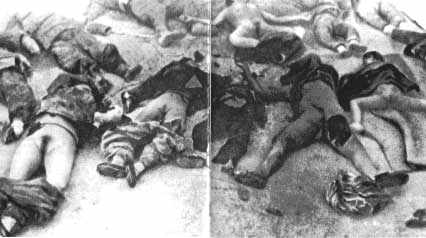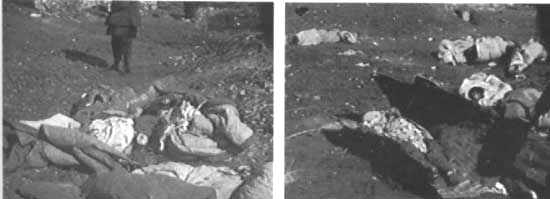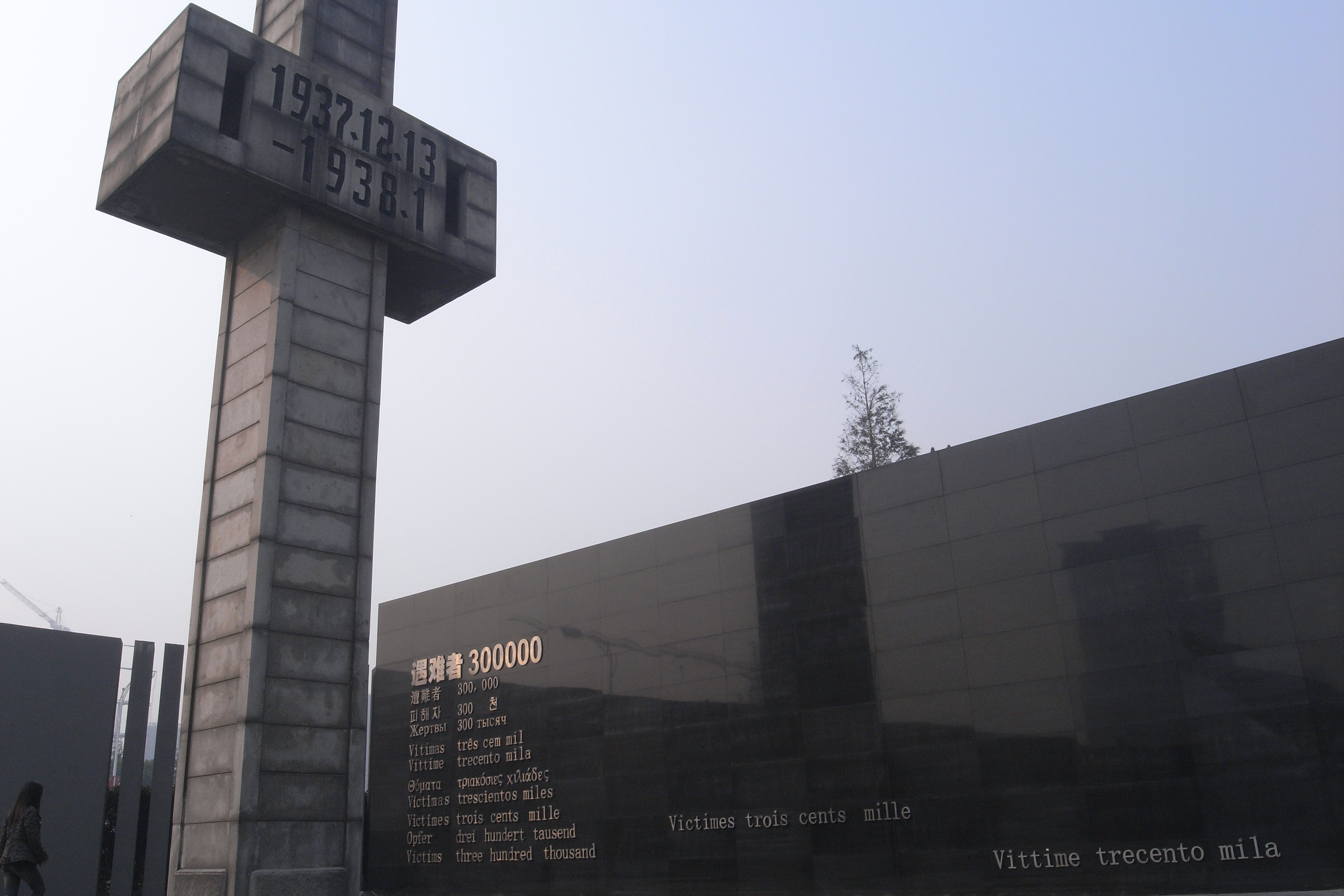eyewitness report filed by a New York Times reporter on Nanking Massacre
Home » eyewitness report filed by a New York Times reporter on Nanking Massacre
Aboard the U.S.S. Oahu at Shanghai, Dec. 17 [1937].
Through wholesale atrocities and vandalism at Nanking the Japanese Army has thrown away a rare opportunity to gain the respect and confidence of the Chinese inhabitants and of foreign opinion there….
The killing of civilians was widespread. Foreigners who traveled widely through the city Wednesday found civilian dead on every street. Some of the victims were aged men, women and children.

Many women and girls were raped and killed.
report 1
[The following is the eyewitness report filed by a New York Times reporter.]Aboard the U.S.S. Oahu at Shanghai, Dec. 17 [1937].Through wholesale atrocities and vandalism at Nanking the Japanese Army has thrown away a rare opportunity to gain the respect and confidence of the Chinese inhabitants and of foreign opinion there….
The killing of civilians was widespread. Foreigners who traveled widely through the city Wednesday found civilian dead on every street. Some of the victims were aged men, women and children.
Policemen and firemen were special objects of attack. Many victims were bayoneted and some of the wounds were barbarously cruel.
Any person who ran because of fear or excitement was likely to be killed on the spot as was any one caught by roving patrols in streets or alleys after dark. Many slayings were witnessed by foreigners.
The Japanese looting amounted almost to plundering of the entire city. Nearly every building was entered by Japanese soldiers, often under the eyes of their officers, and the men took whatever they wanted. The Japanese soldiers often impressed Chinese to carry their loot….
The mass executions of war prisoners added to the horrors the Japanese brought to Nanking. After killing the Chinese soldiers who threw down their arms and surrendered, the Japanese combed the city for men in civilian garb who were suspected of being former soldiers.

Mass killing
report 2
In one building in the refugee zone 400 men were seized. They were marched off, tied in batches of fifty, between lines of riflemen and machine gunners, to the execution ground.Just before boarding the ship for Shanghai the writer watched the execution of 200 men on the Bund [dike]. The killings took ten minutes. The men were lined against a wall and shot. Then a number of Japanese, armed with pistols, trod nonchalantly around the crumpled bodies, pumping bullets into any that were still kicking.The army men performing the gruesome job had invited navy men from the warships anchored off the Bund to view the scene. A large group of military spectators apparently greatly enjoyed the spectacle.
When the first column of Japanese troops marched from the South Gate up Chungshan Road toward the city’s Big Circle, small knots of Chinese civilians broke into scattering cheers, so great was their relief that the siege was over and so high were their hopes that the Japanese would restore peace and order. There are no cheers in Nanking now for the Japanese.
By despoiling the city and population the Japanese have driven deeper into the Chinese a repressed hatred that will smolder through tears as forms of the anti-Japanism that Tokyo professes to be fighting to eradicate from China.report 3
The capture of Nanking was the most overwhelming defeat suffered by the Chinese and one of the most tragic military debacles in the history of modern warfare. In attempting to defend Nanking the Chinese allowed themselves to be surrounded and then systematically slaughtered….The flight of the many Chinese soldiers was possible by only a few exits. Instead of sticking by their men to hold the invaders at bay with a few strategically placed units while the others withdrew, many army leaders deserted, causing panic among the rank and file.Those who failed to escape through the gate leading to Hsiakwan and from there across the Yangtze were caught and executed….
When the Japanese captured Hsiakwan gate they cut off all exit from the city while at least a third of the Chinese Army still was within the walls.
Because of the disorganization of the Chinese a number of units continued fighting Tuesday noon, many of these not realizing the Japanese had surrounded them and that their cause was hopeless. Japanese tank patrols systematically eliminated these.
Tuesday morning, while attempting to motor to Hsiakwan, I encountered a desperate group of about twenty-five Chinese soldiers who were still holding the Ningpo Guild Building on Chungahan Road. They later surrendered.
report 4
Thousands of prisoners were executed by the Japanese. Most of the Chinese soldiers who had been interned in the safety zone were shot in masses. The city was combed in a systematic house-to-house search for men having knapsack marks on their shoulders or other signs of having been soldiers. They were herded together and executed.Many were killed where they were found, including men innocent of any army connection and many wounded soldiers and civilians. I witnessed three mass executions of prisoners within a few hours Wednesday. In one slaughter a tank gun was turned on a group of more than 100 soldiers at a bomb shelter near the Ministry of Communications.A favorite method of execution was to herd groups of a dozen men at entrances of dugout and to shoot them so the bodies toppled inside. Dirt then was shoveled in and the men buried.
Since the beginning of the Japanese assault on Nanking the city presented a frightful appearance. The Chinese facilities for the care of army wounded were tragically inadequate, so as early as a week ago injured men were seen often on the streets, some hobbling, others crawling along seeking treatment.
report 5
Civilian casualties also were heavy, amounting to thousands. The only hospital open was the American managed University Hospital and its facilities were inadequate for even a fraction of those hurt.Nanking’s streets were littered with dead. Sometimes bodies had to be moved before automobiles could pass.The capture of Hsiakwan Gate by the Japanese was accompanied by the mass killing of the defenders, who were piled up among the sandbags, forming a mound six feet high. Late Wednesday the Japanese had not removed the dead, and two days of heavy military traffic had been passing through, grinding over the remains of men, dogs and horses.
The Japanese appear to want the horrors to remain as long as possible, to impress on the Chinese the terrible results of resisting Japan.
Chungahan Road was a long avenue of filth and discarded uniforms, rifles, pistols, machine guns, field pieces, knives and knapsacks. In some places the Japanese had to hitch tanks to debris to clear the road.
From F. Tillman, “All Captives Slain,” The New York Times, December 18, 1937, pp. 1, 10.
